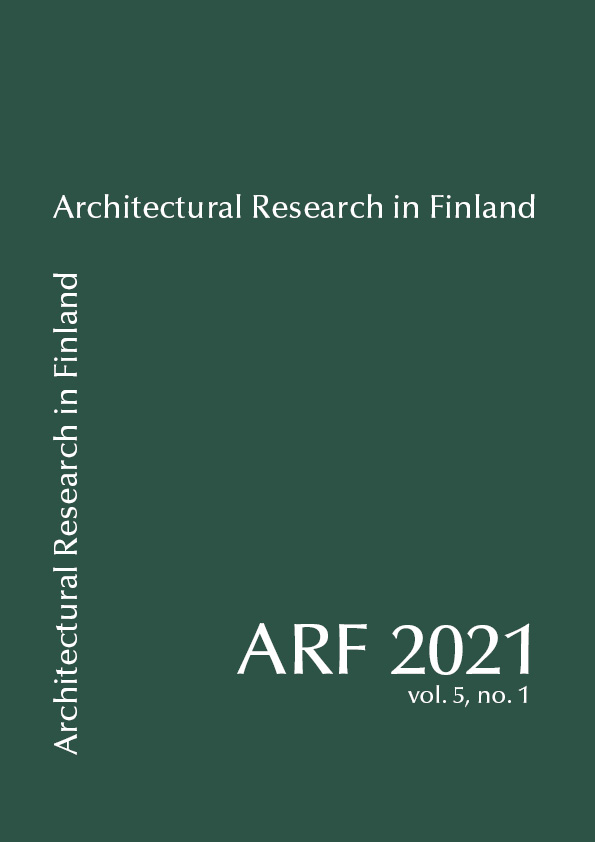Learning from Precedent
The (ir)reproducibility of home
DOI:
https://doi.org/10.37457/arf.113258Avainsanat:
precedent, housing design, environment, technics, poeticsAbstrakti
This paper argues that precedent should play a fundamental role in the development of sustainable homes. It will describe how the design of two energy efficient family homes in Winchester, England, adopt a distinctive approach to environmental precedent.
The modern house is substantially a product of numerical calculation, such as the modelling of performance data and cost-benefit analysis. Construction (materials, u-values) and processes (energy use, assembly, airtightness) are quantified and assessed to ensure they achieve design objectives based on recognised standards of performance (Energy Performance Certificate: A; Code for Sustainable Homes: level 4).
However this technical analysis alone cannot inform the initial creative idea. The design of these houses was informed by intuitive reference to a range of diverse precedents, including the work of Alvar Aalto, Sverre Fehn, Robert Venturi and Roelof Uytenbogaardt.
The asymmetric roofs of Aalto’s Housing for ex-service men in Tampere (1941) define thresholds to front and side doors, and a sheltered private space to the back overlooking the garden. Fehn’s Villa Norrköping (1964) was designed around circadian rhythms, with day and night-time spaces defined by glazed corners (’eyes’) and alcoves, animated by daylight and shadow. Venturi’s Mother’s House (1964) symbolises in its idiosyncratic form and modest material treatment the pragmatic and egalitarian promise of a home and identity of one’s own. House Uytenbogaardt (1993) exploits solar orientation and the topography of its location to the utmost, framing views of the horizon and sunsets over the ocean. The house is part fortified tower house, part bespoke wooden cabinet, responding to the unique atmosphere and light of the Western Cape coastline.
This paper will describe how these two subtly different Winchester houses borrow from each of these examples to reconcile technical requirements with the poetic possibilities inherent in imagining other environments, informed by the specific climate and conditions of the site.




